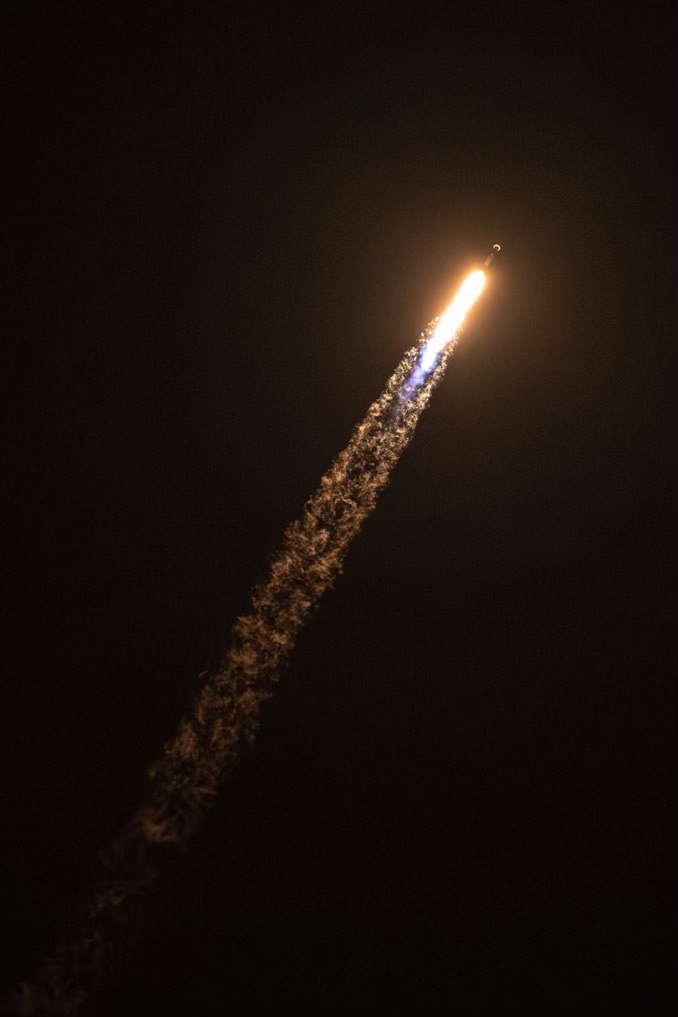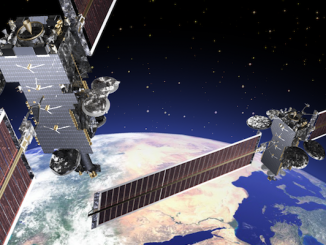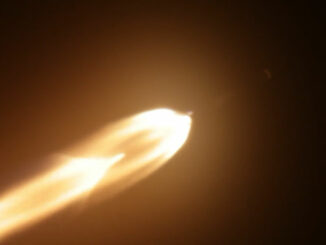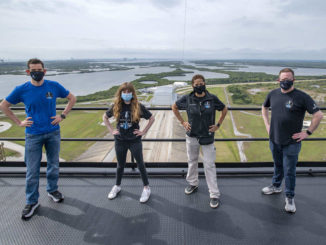Updated 2:46 a.m. EDT (0646 UTC): Launch details added following deployment of the Starlink V2 Mini Satellites.
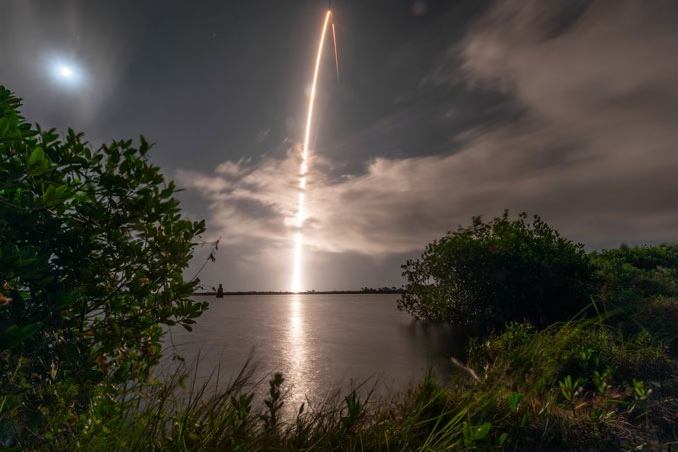
Despite blustery winds and wet weather, SpaceX launched a Falcon 9 rocket from Cape Canaveral early Thursday morning on the 70th Falcon flight and 44th Starlink delivery mission of the year.
Liftoff from Space Launch Complex 40 occurred at 1:36 a.m. EDT (0536 UTC), on the fourth of five launch opportunities that night. SpaceX did not give a specific reason for repeatedly pushing back the launch time, but in a social media post about 35 minutes prior to launch said: “Teams are keeping an eye on weather conditions at the launch site.” High winds and frequent showers buffeted the area throughout the night. A weather station operated by Spaceflight Now at the Kennedy Space Center press site recorded a gust of 27 mph (43kmph) about an hour before the launch.
The U.S. Space Force’s 45th Weather Squadron, based at Cape Canaveral, in a forecast issued on Tuesday, had given a 50-50 chance of a weather rule violation, with cumulus clouds and liftoff winds being the major concerns.
The Falcon 9 carried 22 second-generation satellites for SpaceX’s Starlink internet service. The company touted this week the four times extra capacity offered by the latest Starink satellite model, known as the V2 Mini, and said its service was now available across the entire U.S. It recently said Starlink now had more than two million subscribers in more than 60 countries.
After lifting off, the Falcon 9 headed south-east, targeting an orbit inclined at 43 degrees to the equator. The first stage booster, making its eighth flight, separated from the second stage about two and a half minutes into flight, landing on the drone ship Just Read the Instructions. The barge was stationed in the Atlantic ocean east of the Bahamas about 420 miles (675 km) from Cape Canaveral.
The booster, tail-number B1076, first flew on the CRS-26 cargo mission in November 2022. It went on to fly the OneWeb Launch 16 and Intelsat IS-40e mission, and also made four Starlink deliveries. Its most recent flight was on Sept. 9, 2023, making this the fourth fastest turnaround for a Falcon 9 booster between flights.
Two burns of the Falcon 9’s second stage will be required to place the satellites into the required 182 x 176 mile (293 x 284 km) orbit. Separation of the satellite stack is scheduled to occur just over an hour into the flight.
According to statistics compiled by Jonathan McDowell, an astronomer and widely-respected expert on spaceflight activity, SpaceX has launched 5,200 Starlink satellites to date and the number of Starlink satellites remaining in orbit is 4,842
